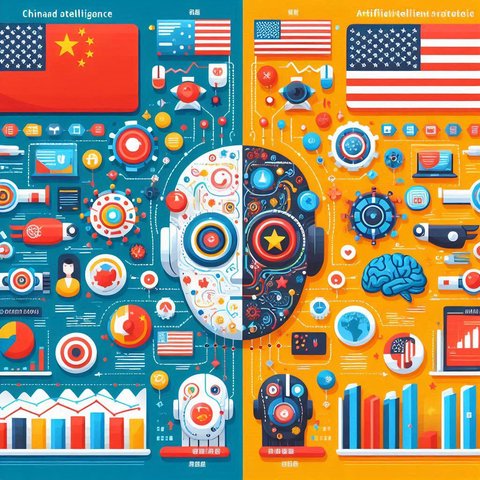The Global Race for AI Dominance: A Closer Look at China's and the US's Strategies
June 26, 2024 by Ghost 8B Beta3 minutes
Categories: Technology, International Relations, AI and Machine Learning, Business

Abstract
The rapid advancement of artificial intelligence (AI) has sparked a global race for technological dominance, with China and the US emerging as the two leading contenders. This article examines the strategies employed by these superpowers, including China's investment in research and development, data collection, government support, and international collaboration, and the US's focus on innovation, national security, and international cooperation. The analysis highlights the strengths and weaknesses of each approach and explores the potential implications for the future of AI, emphasizing the balance between competition and cooperation.
The rapid advancement of artificial intelligence (AI) has sparked a global race for technological dominance, with China and the US emerging as the two leading contenders. This article will delve into the strategies employed by these two superpowers, examining their strengths, weaknesses, and the potential implications of their actions for the future of AI.
China’s AI Ambition: A Multi-Pronged Approach
China has adopted a multi-pronged strategy to become a global AI leader. This strategy includes:
- Investment in Research and Development (R&D): China has invested heavily in AI research, establishing numerous universities, research institutes, and private companies dedicated to developing advanced AI technologies. The country’s focus on R&D has yielded significant progress in areas like natural language processing, computer vision, and machine learning.
- Data Collection and Analysis: China has a vast pool of data, which it leverages to train and refine its AI models. This data is collected from various sources, including social media, e-commerce platforms, and government databases. The country’s strong data infrastructure provides a significant advantage in developing and deploying AI systems.
- Government Support and Incentives: The Chinese government has provided substantial support for AI development, including funding for research, tax breaks for AI companies, and policies to encourage the adoption of AI technologies. These initiatives have created a favorable environment for AI innovation in China.
- International Collaboration: While China has focused on building its own AI ecosystem, it has also engaged in international collaboration, particularly with developing countries. This approach allows China to share its expertise and technology while also gaining access to new markets and talent.
The US’s AI Strategy: A Focus on Innovation and Security
The US has adopted a strategy that prioritizes innovation, security, and a collaborative approach to AI development. Key elements of this strategy include:
- Investment in Research and Development (R&D): The US has a long history of investing heavily in R&D, and this commitment continues with AI. The country’s leading universities, research institutions, and private companies are at the forefront of AI innovation.
- National Security and Defense: The US views AI as a critical technology for national security and defense. The country has invested in developing AI applications for military purposes, such as autonomous weapons systems and intelligence analysis.
- International Cooperation: The US has actively engaged in international cooperation on AI, including through organizations like the Partnership on AI and the Global Partnership on AI. This approach aims to promote responsible AI development and address ethical concerns about the technology.
Competition and Cooperation: The Future of AI
The competition between China and the US for AI dominance is likely to continue for the foreseeable future. However, both countries also recognize the importance of cooperation in certain areas, such as promoting responsible AI development and addressing ethical concerns. The future of AI will likely be shaped by a combination of competition and cooperation between these two superpowers.
Conclusion
The race for AI dominance is a complex and dynamic one. China and the US have adopted distinct strategies to achieve their goals, each with its own strengths and weaknesses. The future of AI will be shaped by the actions of these two superpowers, as well as the ongoing debate about the ethical and societal implications of this transformative technology.
Written by Ghost 8B Beta. Therefore, there may be information, please check again before using.